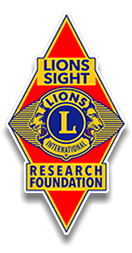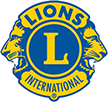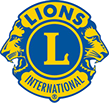Lions Low Vision Center of Texas
MISSION
To provide quality low vision rehabilitation services to persons with vision loss utilizing a multi-disciplinary approach.
To conduct research pertaining to innovative low vision rehabilitation methods and low vision devices, as well as research related to ocular disease.
To deliver high quality education to individuals, our community, and healthcare professionals.
The Lions Low Vision Center of Texas (LLVC) has become a recognized center for clinical services and research related to Low Vision. The establishment of the LLVC was proposed by District 2-A2 and adopted as a MD-2 Texas Project by the Lions of Texas. With generous financial support from the Lions Clubs International Foundation, MD-2 Texas, and the Lions of District 2-A2, the LLVC was constructed on the campus of the UT Health Science Center in San Antonio (UTHSC/SA) and has become well known for the clinical and rehabilitation services provided to patients diagnosed with low vision.“Low Vision” is often an overlooked and under treated health issue in the U.S. and around the world. Generally, low vision is defined as any chronic visual deficit that impairs everyday function and is not correctable by eyeglasses or contact lenses. For individuals that suffer from low vision, it is necessary that they learn to coexist with a serious problem that can severely limit their ability to live independently and to complete everyday activities such as shopping, cooking, reading, and traveling.
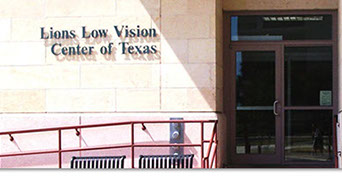
The two patient populations that are contributing the most to the increasing number of patients that are vision impaired are senior citizens and children. The 2000 US Census estimated that 3.3 million Americans over the age of 40 are blind or vision impaired. This equates to 1 in 28 persons. Further, it was estimated that the number of persons with low vision will be 3.9 million by 2020. This projection of a large increase in the prevalence of low vision in the US is driven largely by the fact that visual impairment increases sharply in persons over age 65. At the same time, the number of children with vision impairment is expected to rise with the increase in multiple births as well as the improved survival of low birth weight babies.
The patients treated at the LLVC cover all age groups but the majority are senior citizens. The LLVC staff works with patients that are vision impaired in the traditional sense as well as patients that have visual problems as a result of brain injury or neurological disease. The greatest percentage of patients is from Bexar County but patients are referred to the LLVC from throughout Texas and the Southwest. In addition, the LLVC has built relationships with several school districts in and around San Antonio that result in referrals for low vision children. The LLVC Staff also works closely with the VA and military hospitals in the area in support of Wounded Warrior programs.
All patients who visit the LLVC undergo a low vision evaluation. This diagnostic procedure is much more comprehensive than a traditional vision evaluation and takes much longer. The focus of the low vision evaluation is not to determine how much vision has been lost; rather, the Doctor evaluates how much vision an individual has left. Once the determination is made about how much vision the patient still has, the LLVC team can design a program that will permit the patient to use their remaining vision, when augmented by low vision devices and appropriate training on how to use the selected devices, to effectively perform necessary daily living tasks.
To accomplish its Mission, the LLVC employs a unique business model that integrates a Low Vision Occupational Therapist, who provides rehabilitation and educational services, into a treatment plan designed by the Doctor based on the low vision evaluation and clinical diagnosis of each patient. The LVOT has specialized Low Vision certification and plays a key role in both the evaluation and the rehabilitation of the patient. Other eye care professionals are utilized as necessary, and the LLVC is the only clinic in South Texas where ophthalmologists, optometrists, and occupational therapists work together to provide comprehensive low vision services to patients.
Due in part to its unique services, as the LLVC became known and matured, it easily met and surpassed all planning objectives put in place prior to the opening in 2003. But, with success came the realization that the demand for the services of the LLVC far exceeded the patient capacity of the original facility. No immediate or easy solution to this issue was available; but, in late 2010, space adjacent to the LLVC was vacated.
This development created an unexpected opportunity for the LSRF to propose to UTHSC/SA that the LLVC expand into a portion of the space. Due in part to the long history of successful joint ventures between the Lions and the Department of Ophthalmology at UTHSC/SA, approval was given and the LSRF developed a plan for an updated, reconfigured, expanded LLVC. The Baptist Health Foundation of San Antonio was enlisted as a new community partner and the construction started in late 2011. The ‘new’ Lions Low Vision Center became fully operational in March 2012 and its name amended to be called the Lions Low Vision and Rehabilitation Center.
A specific area of need that our Foundation works hard to address is that of Low Vision Patient Support. In the past, magnification equipment of various types helped the visually impaired to some degree. But, today, technological advance has been a great benefit for many Low Vision patients, especially, legally blind children who are greatly helped through devices such as IPADs, Ruby Readers and CCTV’s. These devices provide magnification, but also, color and background variation and are extremely portable. And since laptop computers, tablets, etc. are commonplace, there is no stigma attached to using devices that, before, were indications of a special need.
Many Low Vision patients have insurance coverage to help with the costs of treatment, medications, and the like but receive no aid with the purchase of these types of devices. LSRF provides financial assistance to purchase these devices when a patient is referred to us by the LVOT. LSRF staff procures the equipment that is then given to the patient. The LVOT provides initial and ongoing training in equipment use to the patient. The expense of these devices, sometimes, limits the ability of LSRF to provide them, so others are invited to assist through Donations made to the “Low Vision Patient Support Fund”.
.jpg?crc=4287281318)
PDG Sam Pantusa District 2-A2 President
presents a check to UT Health Science Center in the amount of $250,000.00 on behalf of the foundation.
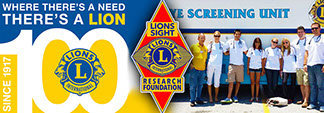
Lions Low Vision Center- Casey and her son Joseph
Lions Low Vision Center UT Health Opthalmology Center
Help Us Continue Our Mission In South Texas Please Donate Now. Every Donation Helps!
